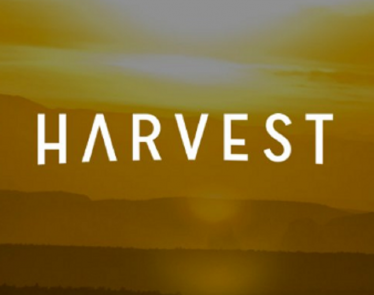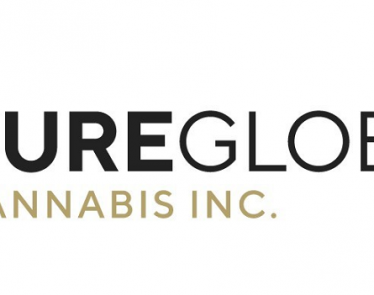Industry experts agree that cannabis companies with the best chances of taking over the markets all have one thing in common – future winners in this industry already have their logistical networks laid out. MedMen Enterprises Inc. (CSE:MMEN) (OTCQX:MMNFF), Curaleaf Holdings, Inc. (CSE:CURA) (OTCBB:CURLF), Green Thumb Industries Inc. (CSE:GTII) (OTCQX:GTBIF), iAnthus Capital Holdings, Inc. (CSE:IAN) (OTCQB:ITHUF), and Harvest Health & Recreation Inc. (OTC:HTHHF) (CSE:HARV) are examples of companies that have made their mark through building a strong national footprint.
Vertically integrated companies with established retail brands in place are best suited to capture the $80 billion US cannabis market. Companies that operate in all areas of the supply chain have more control over the quality of their product and are able to save on costs by not relying on third-party providers.
This flies in the face of what many companies are doing currently – focusing on growing their cultivation capacity while not paying equal attention to branding. John Kagia of analytics firm New Frontier Data said that “Brands which have been able to effectively identify specific consumer segments and tailor their branding and marketing strategies to reflect the priorities and preferences of those groups are best positioned to compete as the market matures.”
In a few years, these same cultivation-focused companies will end up brushed aside, relegated to positions as agricultural farmers rather than industry leaders. Instead, businesses that focus on establishing premier brands and retail experiences will be the ones that maintain long term growth going forward.
Having an Established History of Results
Many companies have plans on how to capture market share, but few can show results. Promises, estimates, and expectations for the future don’t carry as much weight with investors as proven track records do.
Even regulators prefer to award licenses to companies that already have results. One example of this is Harvest Health & Recreation Inc. (OTC:HTHHF) (CSE:HARV), which is among the country’s top license holders with 56 spread across 12 states. They also retain 100 percent license control in Arizona, Arkansas, Ohio, Pennsylvania, and Massachusetts, something no other company can claim. All these states have large cannabis-friendly populations with few issued licenses, which make them the perfect market conditions for companies to expand in.
In an interview with the company’s CEO Steve White, he underscored how U.S. expansion remains a crucial strategy for cannabis companies seeking growth. With so much riding on the ability of these businesses to secure state licenses, firms with a history of success are usually the go-to recipients of these permits.
States like Arizona also are uniquely poised to explode in the coming year or two. Besides having the third largest medical cannabis patient population of 186,000, many expect Arizona to legalize recreational use in the near future. Harvest Health & Recreation Inc. (OTC:HTHHF) (CSE:HARV), which has 90 percent of their revenue coming from the state, would see a $200 million surge in revenue should that happen.
In other states, Harvest Health & Recreation Inc. (OTC:HTHHF) (CSE: HARV) also won one of only two prestigious Santa Monica dispensary licenses as the top-ranked applicant. They also received a medical license in Ohio, alongside winning every license they applied for in Pennsylvania.
For many companies, winning licenses is a crucial part of expanding that can make or break corporate strategies. The application process is competitive, and firms that can consistently acquire these licenses have a massive advantage in the marketplace.
Vertical Integration for Profitability
While future growth potential is still vital to investors, having a track record of success is equally as important. Many businesses have had plenty of funding to play with, often taking losses to expand aggressively. Although easy financing in the past has been abundant, the story is much different today as formerly eager investors no longer have the same reserves of capital to deploy.
Only a few companies have been expanding profitably without relying on excess funding. Harvest Health & Recreation’s (OTC:HTHHF) (CSE:HARV) 8-year history saw itself thriving without having the luxury of excess financing. With almost nothing in outside funding, the company built a vertically-integrated infrastructure stretching across the country that rivals most other competitors. Having recently raised $290 million in outside investment, many eagerly anticipate what they can now accomplish given how much they grew on a previously shoestring budget.
Without vertical integration, it’s much more difficult to guarantee stable prices and consistent quality when third-parties are involved in the growth, processing, or retailing of another company’s products. Instead, businesses can do much more to ensure their internal standards are met while selling their own products in their stores, as opposed to a competitor’s.
The Significance of Retail Presence and Branding
Companies with established retail presences have a significant advantage over their competition. New competitors would have to compete for leftover real estate locations not already gobbled up, not to mention the substantial investment required to build these storefronts.
Businesses that do have strong retail presences usually partner with other companies to stock up their storefronts. In these cases, profit margins become smaller as companies have less control over their retail performance.
Harvest Health & Recreation Inc. (OTC:HTHHF) (CSE:HARV) breaks the mold in this regard. Focusing on areas with high traffic volumes and solid demographics, 60 percent of products sold in Harvest dispensaries are grown, processed, and branded within the company. Few companies come close to approaching those figures.
Further Cannabis Developments
Despite taking financial losses due to their aggressive expansion plan, Medmen Enterprises Inc. (CSE:MMEN) (OTCQX:MMNFF) reported impressive gains on their recent financial statement. The most notable announcement was a 40 percent quarter-over-quarter increase in revenues. They have also begun expanding into California and Nevada through local retail partnerships.
Another company with a strong retail presence is Curaleaf Holdings, Inc. (CSE:CURA) (OTCBB:CURLF). They recently won a new Ohio processing license and also opened it’s 20th and 21st dispensaries in Florida this month. The company is also set to expand into Maryland with a new round of financing.
New executive hires for Green Thumb Industries Inc. (CSE:GTII) (OTCQX:GTBIF) include Matt Miller as General Counsel and Kate Denton for Senior Vice President of Marketing. The later brings brand building experience from PepsiCo and Kraft, while former Board member Pete Kadens stepped down to pursue philanthropic projects. The company also won one of the few New Jersey licenses last month.
New York-based iAnthus Capital Holdings, Inc. (CSE:IAN) (OTCQB:ITHUF) recently was named one of the 2019 OTCQX Best 50 companies. This announcement comes on the heels of a recent court ruling that approved a major merger for the company. The firm’s management has a long history in banking, finance, and law, which helps them operate cannabis assets across six states.
For a FREE research report on Harvest Health & Recreation Inc. (OTC:HTHHF) (CSE:HARV), visit PotStockNews.com








